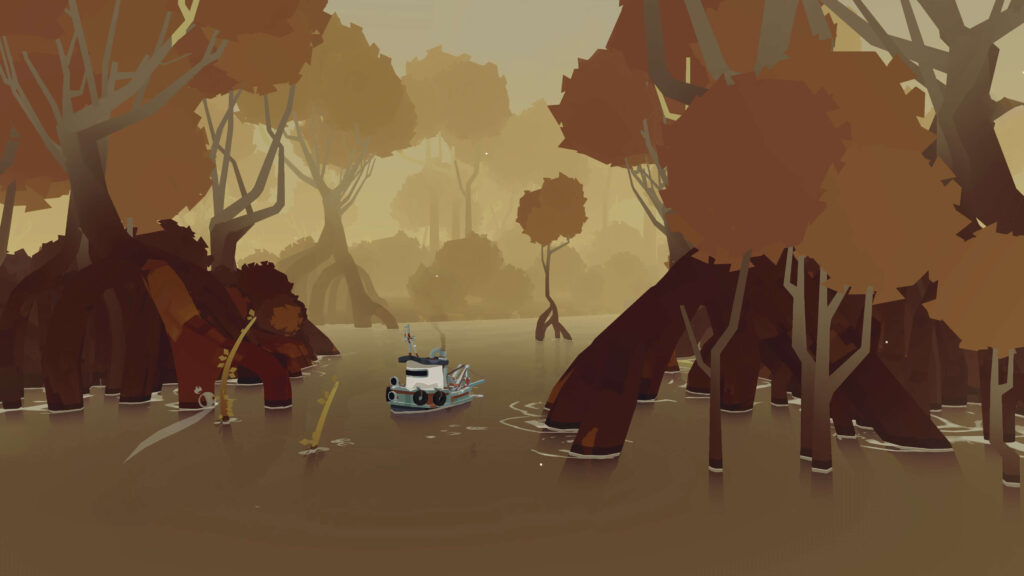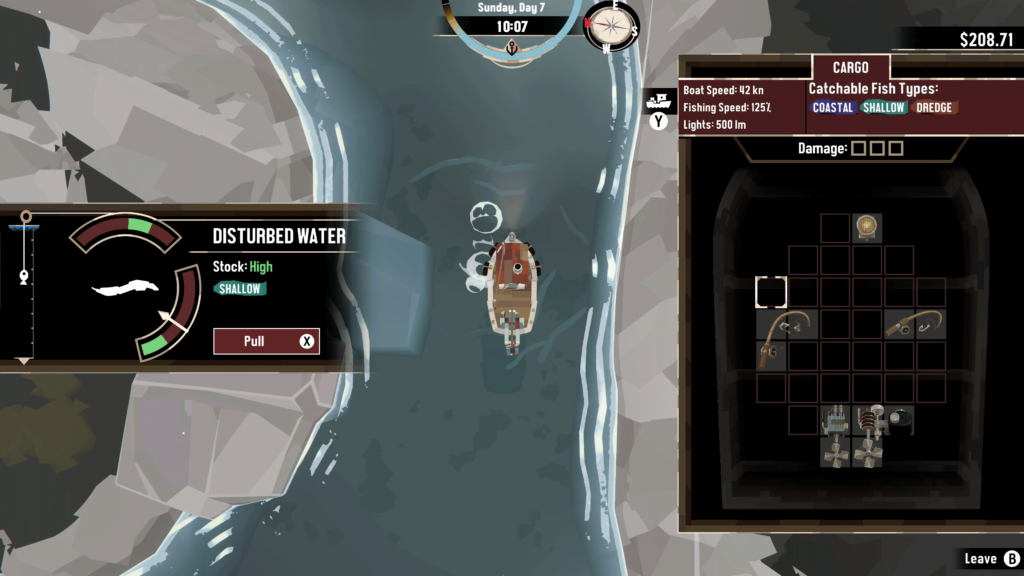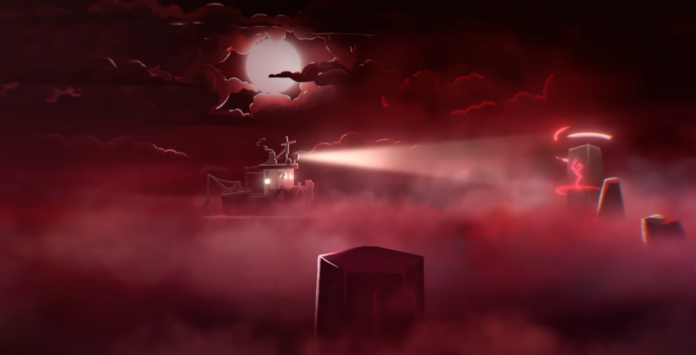The world of Dredge is a foreboding place, a collection of remote islands adrift in a deep blue sea that appears calm and inviting by day yet dark and brooding as night falls. As a down-on-their-luck fisherman, you have little option but to explore these waters for fish and other things you may dredge up from the pitch black depths. The debut game Dredge from New Zealand-based indie studio Black Salt Games oozes atmosphere and manages to combine multiple genres into one haunting adventure.
“While we haven’t created a hardcore horror game, a huge adventure game or a really serious fishing game, the blending of these genres has hooked the attention of players from all three”, says Joel Mason, Writer and Programmer at Black Salt Games. “Also, it makes working on the game extra interesting, because we’re trying to create a unique mixture of components that players haven’t seen before. It can be really powerful. It’s definitely something I’d like to do again in the future.”
The four person team at Black Salt Games founded the studio at the end of 2020 after working together at another studio for over a decade. They wanted to break away and create something different, so they started prototyping game ideas to work on. “We had three very different games that we spent around two weeks on each, developing them up to a point where we could playtest them with other people”, says Mason. “Dredge was one of the game ideas that we prototyped very early on. We realised that it was a really interesting game and we could see where we’d take it in terms of scope and gameplay.”
Delightfully eerie world
Development on Dredge began shortly after and took roughly two years to complete, with the last six months mostly focused on balancing, bug fixing and other tweaks. Getting a demo out well ahead of the release date allowed the team to receive feedback and make some changes ahead of time. It also gave players their first taste of the delightfully eerie world of Dredge. With its quaint port towns, teeming with curious characters ranging from eccentric to downright creepy. Where the sudden ascent of fog renders navigation deadly and where sea creatures emerge from the depths to nibble on boats under the shroud of night.

I think it would be fair to say that we built both the game and its story around the atmosphere”, Mason explains. “Originally, we were very light on the story, and left a lot to the imagination. Players wanted to know more about the world, so we included more ways of telling stories without overwhelming players with screens full of text. We sprinkled in optional things like messages-in-bottles, cryptic monoliths that reveal secrets, and of course, the item descriptions can tell stories. We still try to be mysterious in our approach to explaining the world, but now there’s a lot of things to find for players who really want to get into it.”
Another layer of uneasiness
A big factor in the game’s atmosphere and world building are the visuals. At first glance the graphics appear simple and colorful, but there’s a lot of subtlety in the effects and use of light and dark. According to Lead Artist Alex Ritchie the visual style was born out of necessity: “Because of the quick turnaround for prototyping all the art was simple to save time. A bit surprisingly, the contrast between the atmosphere and the simple art added another layer of uneasiness that fit perfectly, so I was careful to keep that going forward. The rest was experimentation guided by a few ideas. I wanted to keep the art abstract enough so that players’ minds could fill in the details. And I wanted to mix the stylised proportions with harsher elements for an interesting contrast.”

“I personally really enjoy our approach to storytelling”, adds Writer and Programmer Joel Mason. “Keeping things vague and mysterious not only adds to the atmosphere of the game, but gives us space to adapt and build on top of things later in development. This allowed us to solidify our narrative over time instead of being rigidly prescriptive from the start and writing ourselves into a corner. As a first-time writer this flexibility felt like a good strategy.”
A few different mechanics
For a game about fishing stuff out of the water, Dredge is surprisingly light on fishing mechanics. Instead players are presented with a mini game to help speed up the lifting of the catch out from the deep. Mason: “We did try a few different mechanics, but we settled on our current one pretty early on. Our primary goal for the fishing minigame was for it to not be frustrating, so we never wanted to make it too hard or twitchy. Another strong goal was to make it as accessible as possible – one of our strategies for this was to have no failure state, and for it to slowly complete on its own. Additionally, we have an option in the settings menu to remove the penalty on missing the targets.”

“First impressions are very important, so when playtesting we wanted to see how long it took players to understand how the minigame worked”, he continues. “They’d begin the minigame, which starts the reel spinning. We were hoping they’d understand that they had to hit the green targets within a few seconds. Even with no tutorial. Our first playtester hit the first target after approximately 0.5 seconds. So we considered that a big success!”
Dredge releases on 30 March on PC, PlayStation, Xbox and Nintendo Switch.

